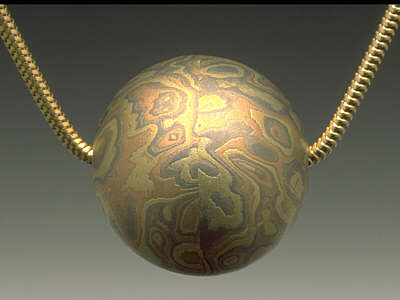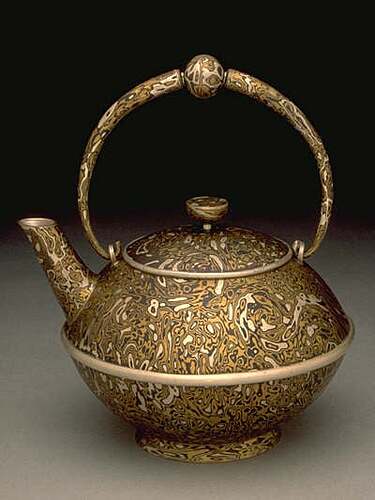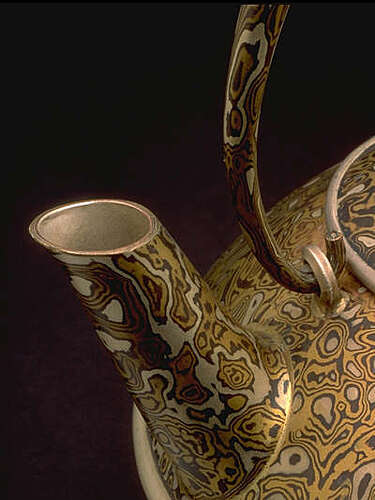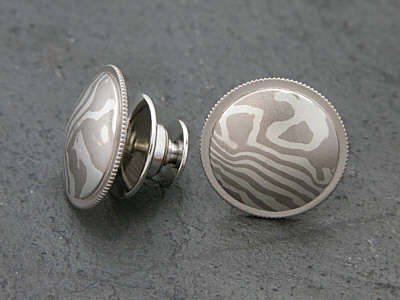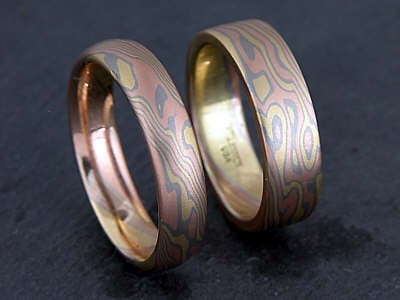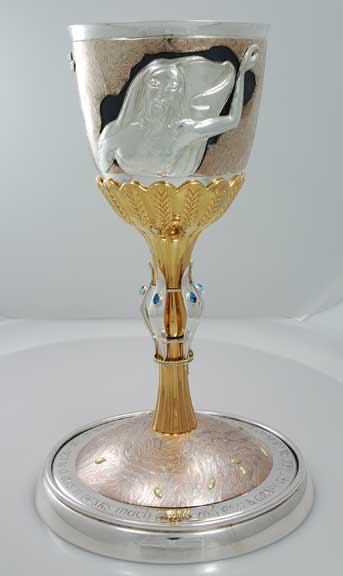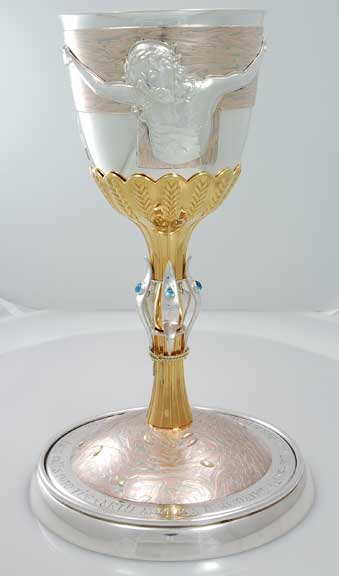Mokume translates from Japanese as “wood eye” which refers to the burl type of wood grain and gane means " metal". The technique was originally created to make parts of the handle for the samurai’s sword. The beautiful patterns in these pieces for the handle would reflect similar patterns developed in the forging of the sword blade. Today the beautiful and unique patterns in mokume are used to create one of a kind rings and jewelry.
After extensive research on this ancient technique, I have developed my own modern method for making mokume gane using currently available equipment and materials. In my work I fuse sheets of platinum, gold, and silver alloys together. I then forge and carve the stack to create unique patterns in the metal.
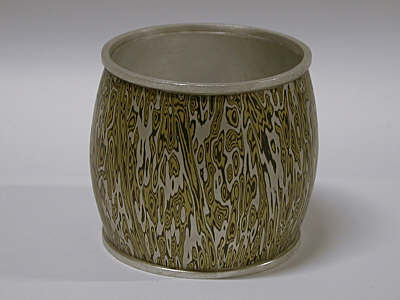
Teapot
Teapot sterling silver, copper and brass 6"x7"
1 Like
Teapot
Teapot sterling silver, copper and brass 6"x7"
Chalice - Back View
The cup is sterling that is over laid with 14k red gold, 14k Pd white gold and sterling mokume gane and the Christ figures are overlaid on that (The repousse of the Christ figures was done by Valentin Yotkov). The interior of the cup is 24K vermeil. The stem is 24K vermeil over sterling the sterling leaves have blue topaz set in them. The base is overlaid with a disk
of 14k red gold, 14k Pd white gold and sterling mokume-gane and “grains of wheat” in 18k yellow and 14k red golds.
Chalice - Front View
The cup is sterling that is over laid with 14k red gold, 14k Pd white gold and sterling mokume gane and the Christ figures are overlaid on that (The repousse of the Christ figures was done by Valentin Yotkov). The interior of the cup is 24K vermeil. The stem is 24K vermeil over sterling the sterling leaves have blue topaz set in them. The base is overlaid with a disk
of 14k red gold, 14k Pd white gold and sterling mokume-gane and “grains of wheat” in 18k yellow and 14k red golds.

